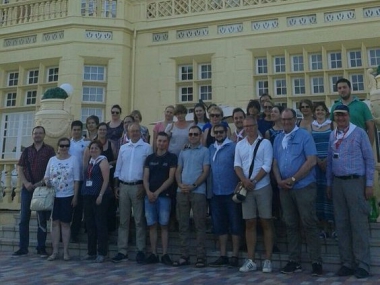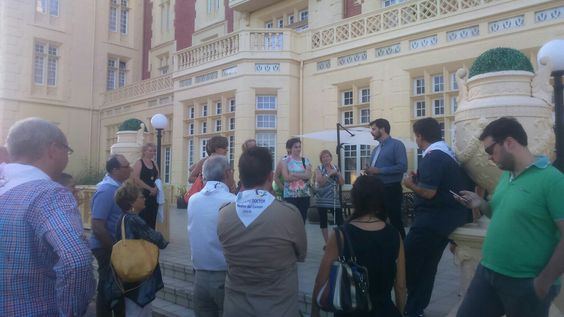STUDY VISIT IN MEDINA DEL CAMPO: FACILITATION SKILLS BY THE SPANISH WAY
Edited on
29 November 2018The Spanish small town of Medina del Campo hosted since 5th to 8th September 2016 the first Working study visit of the second phase of the URBACT III Project City Centre Doctor. Around 30 international representatives of the different partner cities (Vamez - Czech Republic, Amarante - Portugal, Petrinja - Croatia, Idrija - Slovenia, Heerlen – The Netherlands, Radlin - Poland, Nort-Sur Erdre - France, Naas – Ireland and San Donà di Piave - Italy) participated in this study visit, probably during the hottest days of this Spanish summer, in a monumental framework (The Mota’s Castle was built during the XII and XVI centuries and nowadays it is a regional training centre). The study visit dates also were singular for the Municipality of Medina del Campo because they were in coincidence with the local fairs and festivity of San Antolín.

 During the working days, the City Centre Doctor's Lead Expert, Mr. Wessel Badenhorst, managed the key activities of the meeting, contributing to its quality and sucess. Also, Mrs. Sally Knees from the URBACT III programme participated and moderated some foundamental work sessions, explaining participative methods to be implemented in the different ULGs. All the sessions were well accepted by the Project participants, always thinking in to transfer knowledges in their respectives territories. From the host city, the study visit performed in the context of the Medina’s Sustainable Development Strategic Plan Medina 21 and its experience as a participative and sustainable strategy with more tan 15 years of application. In this sense, there were worked two main axis:
During the working days, the City Centre Doctor's Lead Expert, Mr. Wessel Badenhorst, managed the key activities of the meeting, contributing to its quality and sucess. Also, Mrs. Sally Knees from the URBACT III programme participated and moderated some foundamental work sessions, explaining participative methods to be implemented in the different ULGs. All the sessions were well accepted by the Project participants, always thinking in to transfer knowledges in their respectives territories. From the host city, the study visit performed in the context of the Medina’s Sustainable Development Strategic Plan Medina 21 and its experience as a participative and sustainable strategy with more tan 15 years of application. In this sense, there were worked two main axis: 
 There was also time to discover and enjoy some of the tipical activities of the fairs and festivity of San Antolin as the running bulls or the urban theatre, and there was also the opportunity to better know the Spanish culture exposed in the Medina’s citizenship, gastronomy, and culture in general. In conclusion, the study visit in Medina del Campo was really satisfactory, achieving all its objetives and always trying to make all participants, main actors of the opera.
There was also time to discover and enjoy some of the tipical activities of the fairs and festivity of San Antolin as the running bulls or the urban theatre, and there was also the opportunity to better know the Spanish culture exposed in the Medina’s citizenship, gastronomy, and culture in general. In conclusion, the study visit in Medina del Campo was really satisfactory, achieving all its objetives and always trying to make all participants, main actors of the opera.
 Submitted by Alberto Ferri on
Submitted by Alberto Ferri on




